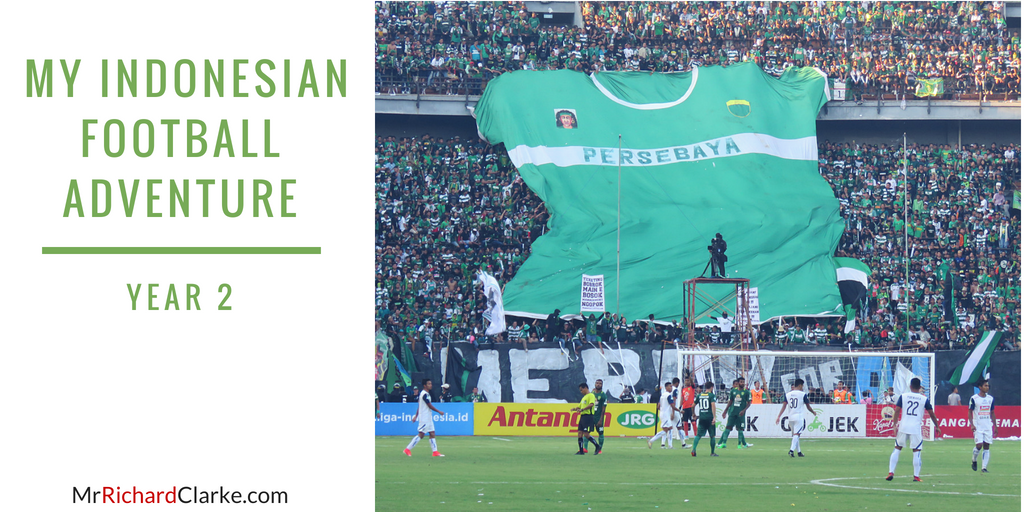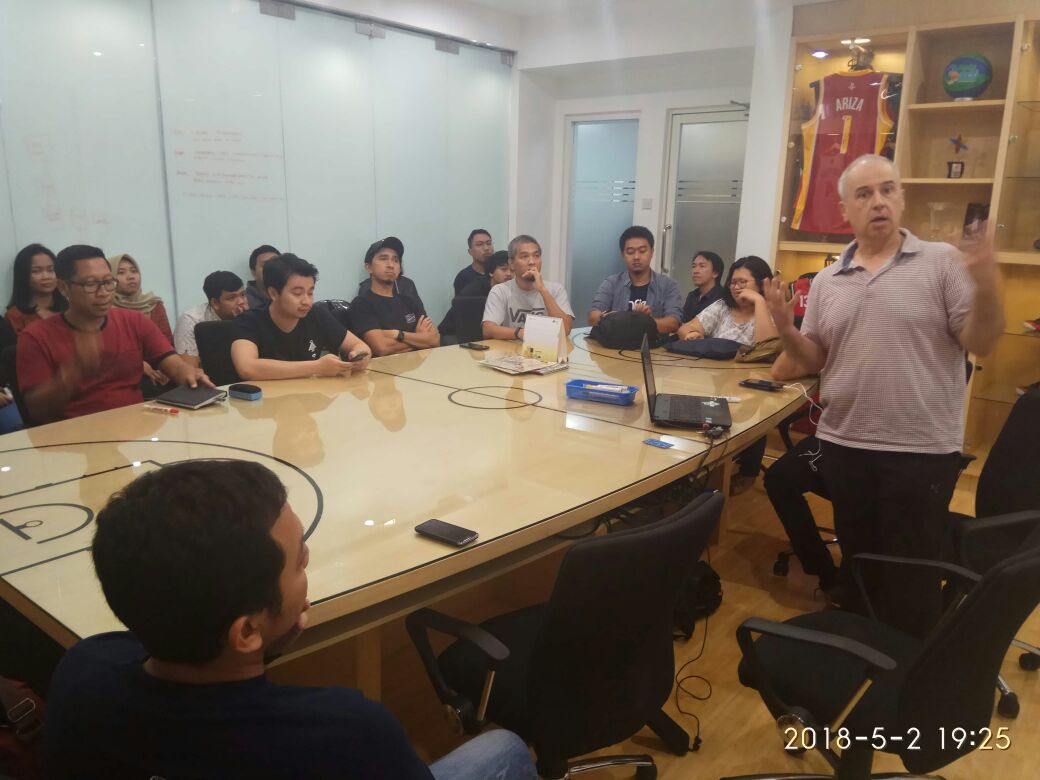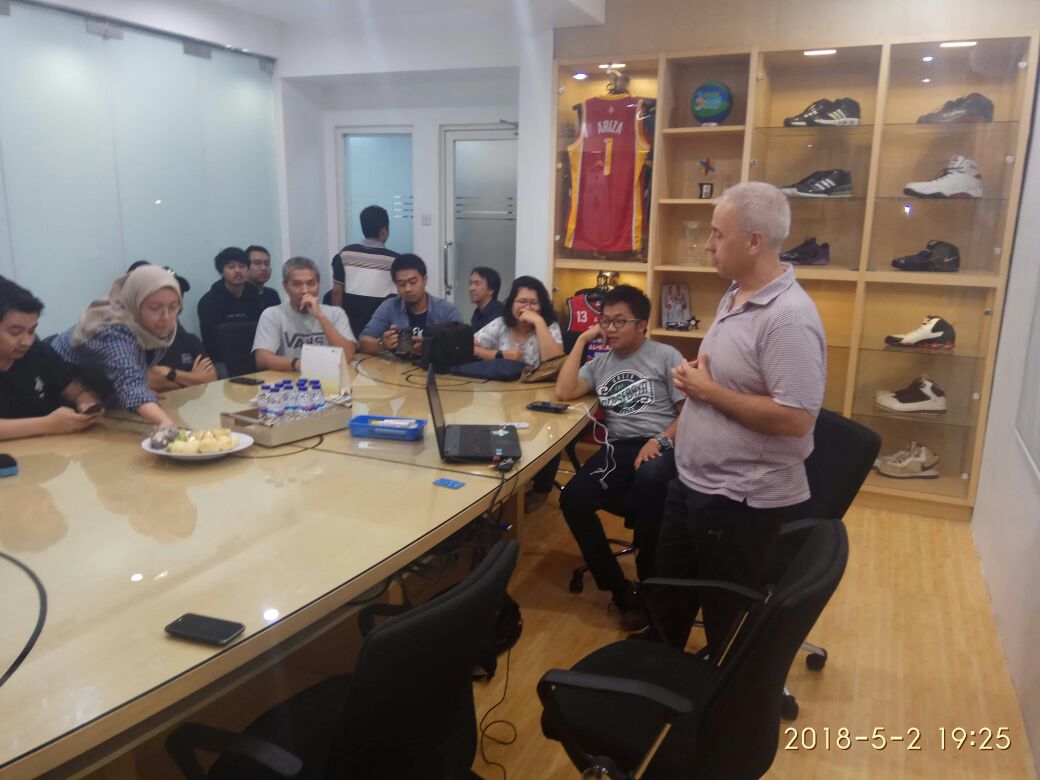Indonesian football Year 2: bigger crowds, island-hopping and digital acceleration
The Indonesian Football League is a crazy place to work.
Crazy interesting, crazy different.
My second year working in Liga 1 is looking to build on the success of the first 12 months, during which we built a following of 1m across all social media inside 10 months from a standing start.
Back then FIFA’s two-year ban on domestic and international Indonesian football because of “political interference” had only just ended. So it was a race against time to get the League up and running. Then it was a matter of sprinting to catch up some of the time that had been lost.
-
Rich
Clarke
- Oct 31, 2018 FI 12: Goran Gancev - I hope in five to 10 years the Indonesian League will be very attractive for European players
- Jul 10, 2018 FI 11: Jacksen F. Tiago: Why I 'kill a lion' every day in training
- Jul 6, 2018 FI 10: Peter Butler: Persipura, SE Asia and Africa... via Halifax
- Apr 12, 2018 FI 09: Kim Kurniawan: Football, life and Persib Bandung
- Mar 1, 2018 FI 08: Danny Guthrie - Why I moved to Mitra Kukar
- Dec 30, 2017 FI 07: Arthur Irawan - Europe, entrepreneurship and fighting back
- Dec 24, 2017 FI 06: Antony Sutton/Jakarta Casual 2 - looking back on 2017
- Nov 5, 2017 FI 05: Nick van der Velden - Bali United's grandfather, Van Gaal and winning titles
- Oct 26, 2017 FI 04: Marc Anthony Klok - I want to play for the Indonesian national team
- Oct 6, 2017 FI 03: Raphael Maitimo - a football education with Dutch legends
- Oct 6, 2017 FI 02: Antony Sutton/Jakarta Casual - the fans' perspective
- Oct 6, 2017 FI 01: Raphael Hartman - Marketing the Indonesian League
A couple of delays meant the current Liga 1 began in early March and will end in December. GO-JEK are now sole sponsors and all the famous foreigners from last year – Michael Essien, Peter Odemwingie, Momo Sissoko, Didier Zokora – have left. The most familiar names to arrive were Danny Guthrie at Mitra Kukar and Julien Faubert at Borneo FC.
The early season crowds were much higher as Persija Jakarta returned to the newly-renovated 65,000-capacity Gelora Bung Karno before vacating for the Asian Games. I was pitchside for the sell-outs against Bhayangkara and Arema in the opening weeks. Meanwhile, elsewhere in Java, the promotion of Persebaya, and their vociferous “Bonek” support, to the top flight meant regular 55,000 crowds by the “Green Force” in Surabaya.
This season my role is a little different. I am directly employed by the League (Liga Indonesia Baru or LIB). As ever, it is about developing the content strategy and growing social media reach and engagement. Then I hope I can bring best practice and know-how to the League digital properties thanks to my experience in the US and Europe.
However perhaps the most important part is visiting the clubs to deliver seminars on digital and social media acceleration. Persebaya, Borneo FC and Mitra Kukar were first on the list but there are many more to come. This is set to be a season of island-hopping and air miles, presentations and handshakes.
There are wide discrepancies in the digital capacity of Liga 1 clubs, Persib Bandung are the 20th biggest club in the world on social media but other teams have followings numbering a few thousand. Last year, one of the top-flight clubs did not have a Facebook page.
The same applies to the resources they have at their disposal. Persebaya share their office with the DBL (the country’s high school basketball league). It looks like the HQ of a Silicon Valley behemoth and, in turn, their staff is overflowing with enthusiastic, digital-savvy millennials. For others, social media is lumped on the desk of an already overburdened press officer.
I have been learning some Bahasa but my talks will be English for now. My team consists of a small video production unit, we supplement our trips with shoots at practice to create timeless and pre-match content for LIB channels. Then there are game-day shoots.
Delivering my session to the digital, social media and marketing team of Borneo FC
Ideas are limited by time, lack of in-stadium equipment and, as this is new to them, the sometimes laissez-faire arrangements of clubs. Footballers are footballers wherever you go, so competitive games always work. Many ideas that we are all too familiar with in England have not been done in Indonesia so we are still working through this ‘low hanging fruit’.
Culturally I have found the Indonesian sense of humour to be slapstick, hence the roaring success of Dizzy Penalties last season. Meanwhile, food content is not just a firm request from the sponsors, Indonesia (like the US but utterly unlike the UK) is obsessed with cuisine by and its infinite regional variations. Taste tests just never fail.
This approach won’t win us awards or favour in the one-upmanship of Leagues elsewhere but it is bringing us engagement, a clear ROI for LIga1, value for our sponsors and is slowly shifting the culture of a league that has sometimes struggles with change. I’ll take that for now.
The fans are a particular emphasis this season. The Indonesian supporters are perhaps the most passionate and dedicated I have ever experienced.
With the digital and social media teams of Borneo and Mitra Kukar on the island of Kalimantan
They travel vast distances and through many times zones to follow their clubs. Air travel in Indonesia is of a quality akin to my time crisscrossing the US with Colorado Rapids but the roads are shocking. In big cities, they are often choked by traffic, in more rural locations they can be potholed. But, by hook or by crook (and mostly by moped), the Indonesian fans get there. In one game this season, visiting fans caused a small issue by putting up their flags in the stadium FOUR days before the game.
Every team has drummers, every team has chant leaders (sometimes middle-aged, sometimes women in hajibs), every team choreographies and tifos. Loyalty, passion and devotion are badges of honour. All this is why a small band of in-the-know western tourists attend Indonesian games.
It is also why we’ll be celebrating the fans’ passions and telling their stories throughout the season.
The move from TVOne to Indosiar has seen TV ratings improve dramatically, with the final to the Praia President gaining almost a third of the viewing audience in pre-season.
In most countries, such a “warm-up” tournament would be preparatory if not downright casual. However, in Indonesia, it was so serious that Persija Jakarta and Bali United balanced their resources carefully through the AFC Cup, Indonesia’s return to international club competition, whose early rounds were staged at the same time. As it turned out, the latter team failed to qualify from their group but the former went as far as the ASEAN zone semi-finals. An improvement in AFC competitions is surely on Indonesia’s To-Do list.
Then there are more serious issues such as violence involving supporters: deaths in stadiums are lamentably regular but so are riots if the fans’ see their team lose or they simply cannot get into a sold-out stadium. In addition, there is too little clarity over structural issues that seem “a given” in Europe. For example, moving teams in mid-season to play their home games in faraway cities will never seem normal to me. But it is accepted here.
Everyone overuses the word “potential” in regard to Indonesian football. With this much love for the game and this many people, it is no surprise. However, that very potential is both the reason for unbridled excitement and intense frustration when it goes unfulfilled.
If we are taking two steps forward and one back on a regular basis then I suppose it is still a net gain, albeit more slowly than we’d all like. But then success is always a bumpy, meandering path so, more often than not, it is the culture that dictates the speed of travel. In a wider sphere, we only have to look at the economies of Japan and Germany in the post-war years. Or, more recently, the approach of some Scandinavian countries to well-being among their population.
When I worked in US soccer, I felt more of a foreigner than I expected. Presumably, this was because I should have felt at home, the culture seemed familiar and I spoke the language. However, whenever I got comfortable there was the inevitable jolt of an important social, verbal or footballing misunderstanding. And, of course, there was little real desire on their part to learn from the outside.
In Indonesia, I feel less of a foreigner than I expected. This is partly because it is perhaps the friendliest country I have ever experienced. Not the fake Have-a-Nice-Day variety but genuine smiles and generosity from people who possess little themselves so they give you their concern. For that, one can forgive a lot.
A country’s culture (sporting or otherwise) can only be fully understood by learning its history and its language while travelling and experiencing its people.
This will be the year I do that in Indonesia football.
I’ll let you know how I get on.
* Thanks: To all the staff at Liga1, the Liga1 clubs and GO-JEK, who have been so kind and helpful.









